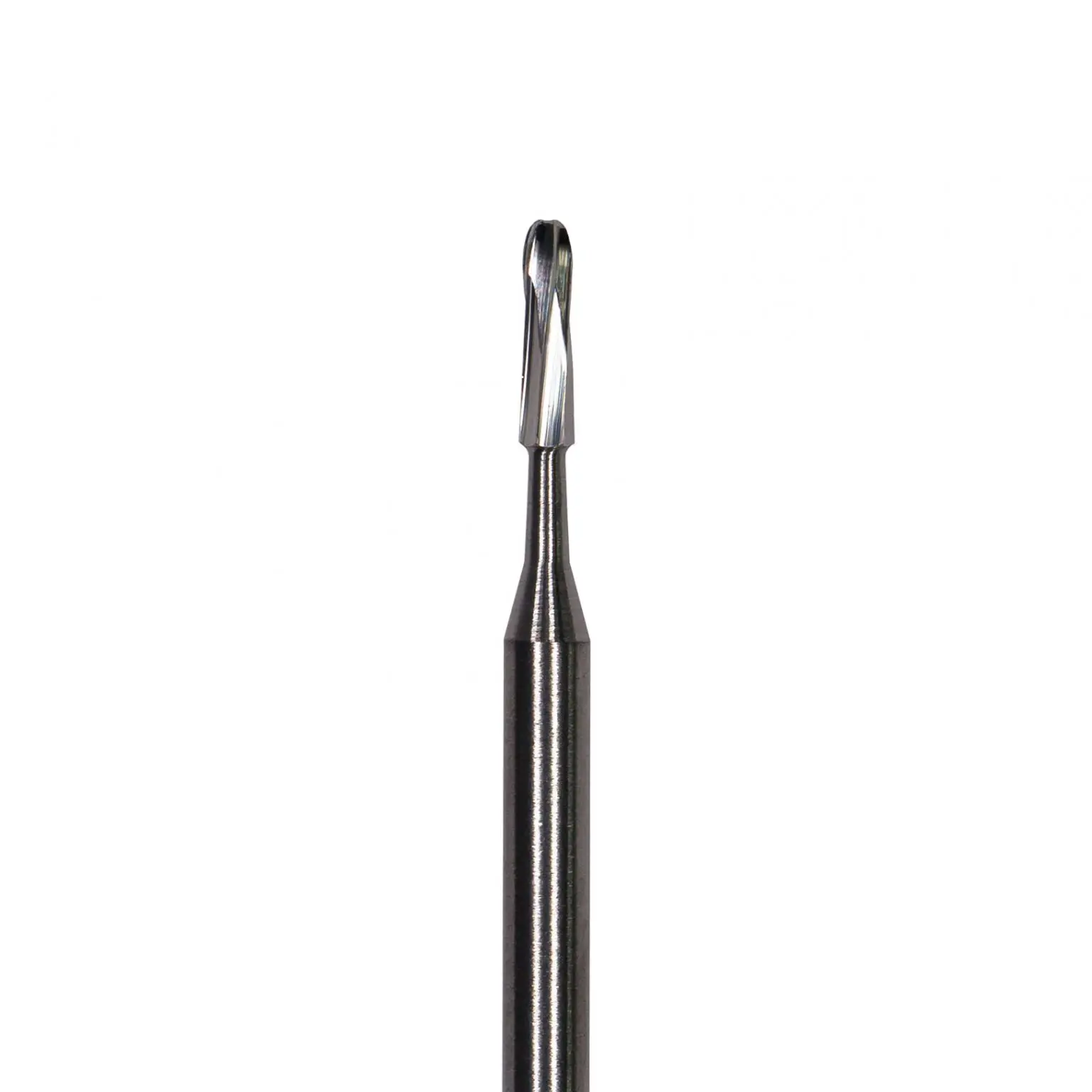finishing burs are indispensable tools in the field of dentistry, playing a critical role in refining restorations and enhancing dental procedures' outcomes. This article delves into the various types of finishing burs, their specific uses, and the benefits they offer in dental practices. We will also explore how to choose the best finishing burs for different tasks, all while considering wholesale options, manufacturers, and suppliers for these precise instruments.
Introduction to Finishing Burs
● Definition and Primary Functions
Finishing burs are rotary instruments that have become essential in modern dentistry. They are designed to refine and shape dental restorations and soft tissues, ensuring a smooth and precise finish. These burs are commonly used in a range of dental procedures, including enameloplasty and odontoplasty, where they help achieve the desired contour and finish of teeth and restorations.
● Importance in Dental Procedures
The importance of finishing burs in dental procedures cannot be overstated. They allow dental professionals to execute complex tasks with high precision and efficiency. The ability to provide a polished and aesthetically pleasing finish not only enhances the patient's experience but also contributes to the longevity and functionality of dental restorations. The varied shapes and materials of these burs make them versatile tools suitable for many applications, from routine cleanings to intricate surgical procedures.
Types of Finishing Burs
● Overview of Available Types
Finishing burs come in a myriad of types, each suited for specific applications in dental practices. The most common types include carbide burs, diamond burs, and different varieties of stone burs, such as white and green stone burs. Each type offers distinct properties that make them suitable for certain tasks, ranging from initial shaping to final polishing.
● Materials Used (Carbide, Diamond, etc.)
The materials used in manufacturing finishing burs greatly affect their performance and application. Carbide burs, known for their strength and cutting action, are ideal for a robust range of finishing tasks. On the other hand, diamond burs are favored for providing a smooth and fine finish with minimal heat generation, making them perfect for polishing and delicate work. Stone burs, including white and green varieties, are specialized for composite finishing and amalgam tasks.
Carbide Burs: Features and Applications
● Strength and Cutting Capabilities
Carbide burs are celebrated for their robustness and efficiency in cutting action. They offer a good balance of strength and precision, making them suitable for a wide array of finishing tasks. The durability of carbide material ensures that these burs can withstand the rigors of multiple procedures without losing their effectiveness, thereby providing consistent performance in dental practices.
● Suitable Tasks
Ideal for tasks involving the removal of excess material and shaping of restorations, carbide burs are versatile tools in the dentist's arsenal. They are particularly effective in refining the contours of composite and amalgam restorations, ensuring a seamless fit and finish. Their ability to maintain sharpness over extended use makes them a preferred choice among dental professionals.
Diamond Burs: Characteristics and Benefits
● Smooth Finish and Heat Management
Diamond burs are known for their exceptional ability to deliver a smooth, polished finish. They generate less heat compared to other burs, which is crucial in preventing damage to the tooth structure during procedures. This quality makes diamond burs an excellent choice for fine-tuning restorations and achieving a high-quality polish.
● Ideal Uses in Dentistry
The fine grit and precision of diamond burs make them suitable for a variety of applications, including polishing dental implants and finishing aesthetic restorations. Their capability to produce a superior finish with minimal pressure enhances the overall aesthetic and functional outcome of dental procedures, making them an invaluable tool for cosmetic dentistry.
Stone Burs: White vs. Green
● Differences in Applications and Materials
Stone burs are categorized into white and green varieties, each designed for specific uses. White stone burs are primarily used for composite finishing due to their smooth and vibration-free performance. In contrast, green stone burs are tailored for finishing amalgam restorations, offering a different material composition that suits the task at hand.
● Common Uses in Dental Procedures
Both white and green stone burs have their place in dental procedures, with white stone burs excelling in finishing composite materials and green stone burs optimized for amalgam work. The choice between them depends on the materials and the desired outcome of the procedure, providing dental practitioners with options to meet their specific needs.
Specialty Burs and Their Uses
● Interproximal Reduction Burs
Among the specialty burs, interproximal reduction (IPR) burs stand out for their precision and efficiency in cosmetic and restorative procedures. These burs are designed to make precise adjustments to tooth spacing, aiding in orthodontic treatments and improving the overall alignment and aesthetics of the teeth.
● Other Niche Applications
Specialty burs also encompass a wide range of other tools designed for specific dental applications, such as endodontic procedures and implantology. These burs are crafted to meet the unique demands of various dental disciplines, ensuring that professionals have access to the right tools for every situation.
Uses of Finishing Burs in Dentistry
● Refining Restorations
Finishing burs play a pivotal role in refining restorations by shaping and smoothing composite, amalgam, and other restorative materials. This process is essential for achieving a natural look and feel, as well as ensuring the durability and functionality of the restoration in the patient's mouth.
● Soft Tissue Contouring
In addition to working on hard tissues, finishing burs are used for soft tissue contouring. They allow for the precise shaping and re-contouring of gingival tissues, contributing to both the aesthetic and functional aspects of dental treatments. This application is particularly important in procedures aimed at enhancing the patient's smile.
Benefits of Using Finishing Burs
● Precision and Smoothness in Dental Work
One of the primary benefits of using finishing burs is the ability to achieve precise and smooth finishes on restorations and teeth. This precision is crucial for both the aesthetic quality and functional performance of dental work, ensuring patient satisfaction and long-term success.
● Efficiency and Versatility
Finishing burs are highly efficient and versatile tools that allow dental professionals to perform a variety of tasks with ease. Their design minimizes the pressure required during procedures, reducing fatigue and enhancing precision. This versatility makes them suitable for a broad range of dental applications, from routine care to complex restorative work.
Choosing the Right Finishing Bur
● Factors to Consider: Material, Shape, Blade Count
Selecting the right finishing bur involves considering several factors, including the material, shape, and blade count. Dentists must match the bur to the specific task and material being worked on, such as composite, amalgam, or ceramic. The shape of the bur, whether flame, pear, or wheel, is chosen based on the procedure's requirements.
● Matching Burs to Specific Tasks
Understanding the specific uses and advantages of different burs is essential for selecting the best finishing burs for any given task. This knowledge ensures that dental procedures are conducted efficiently and effectively, maximizing the benefits for both the practitioner and the patient.
Conclusion: Enhancing Dental Work with Finishing Burs
Finishing burs are indispensable in the world of dentistry, offering precision, efficiency, and versatility that enhance the quality of dental care. By understanding the different types, uses, and benefits of these tools, dental professionals can improve their practice and provide exceptional outcomes for patients. Whether opting for carbide, diamond, or specialty burs, the right choice can significantly impact the success of dental procedures.
About Boyue
Jiaxing Boyue Medical Equipment Co., Ltd is a leading manufacturer specializing in producing high-precision medical rotary cutting tools using 5-axis CNC precision grinding technology. With a focus on dental burs, dental files, bone drills, and surgical tools, Boyue is committed to providing reliable products for dental and surgical applications. Our advanced technology and dedication to precision have set new standards in the industry, ensuring our dental burs and files meet international levels of quality. Boyue's innovations continue to benefit oral patients worldwide with cost-effective and superior dental solutions.

Post time: 2025-05-24 12:20:04


